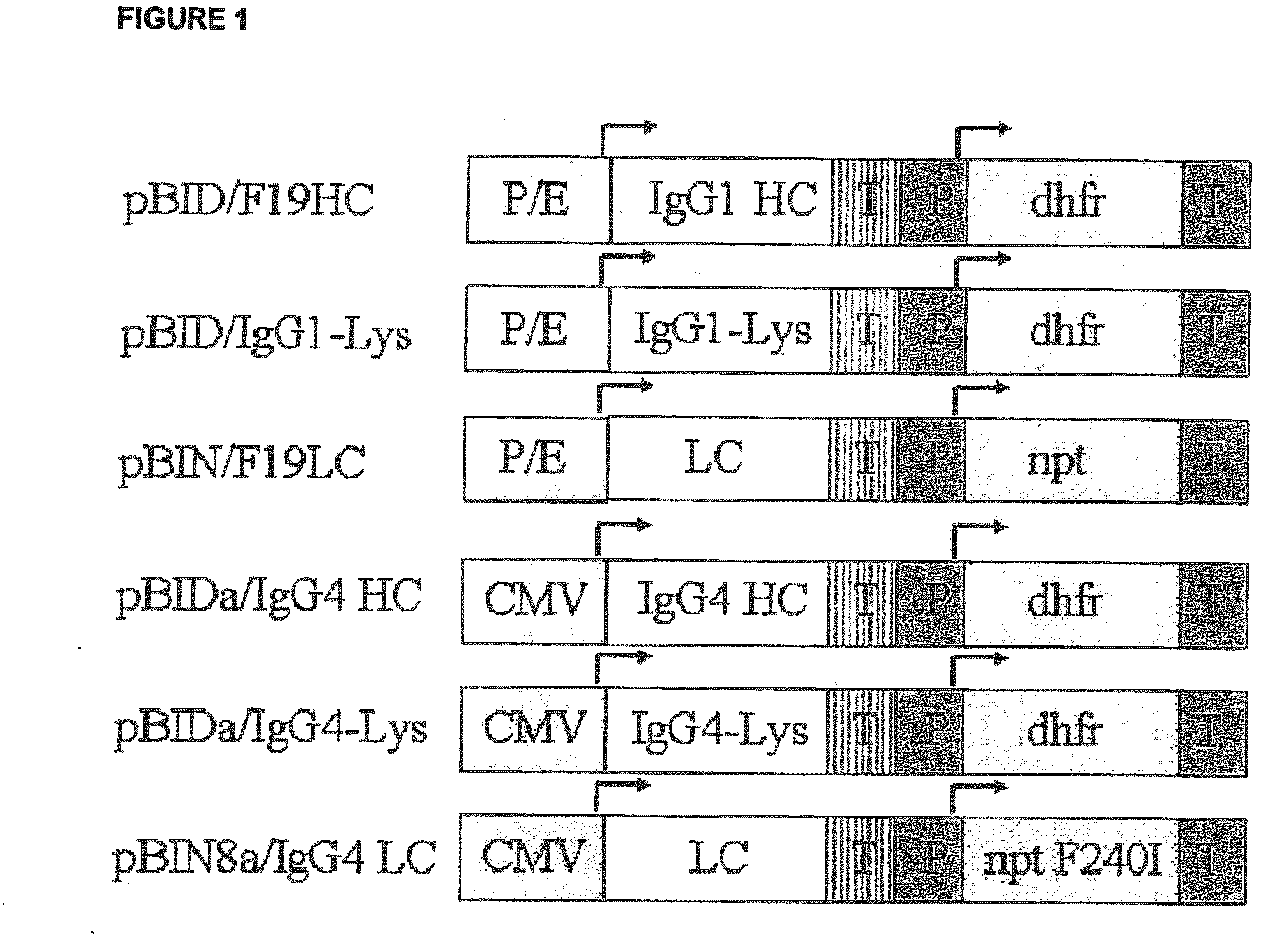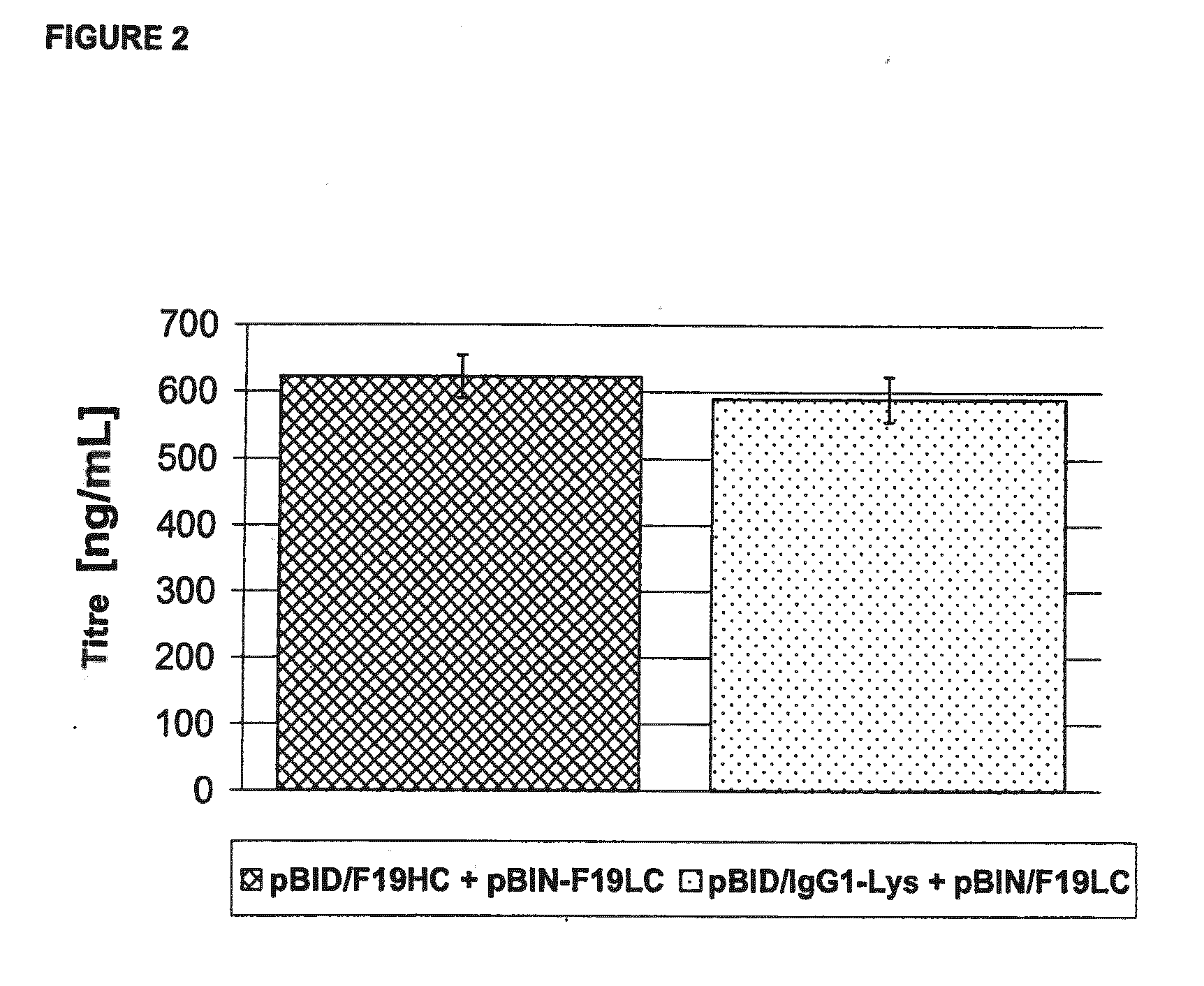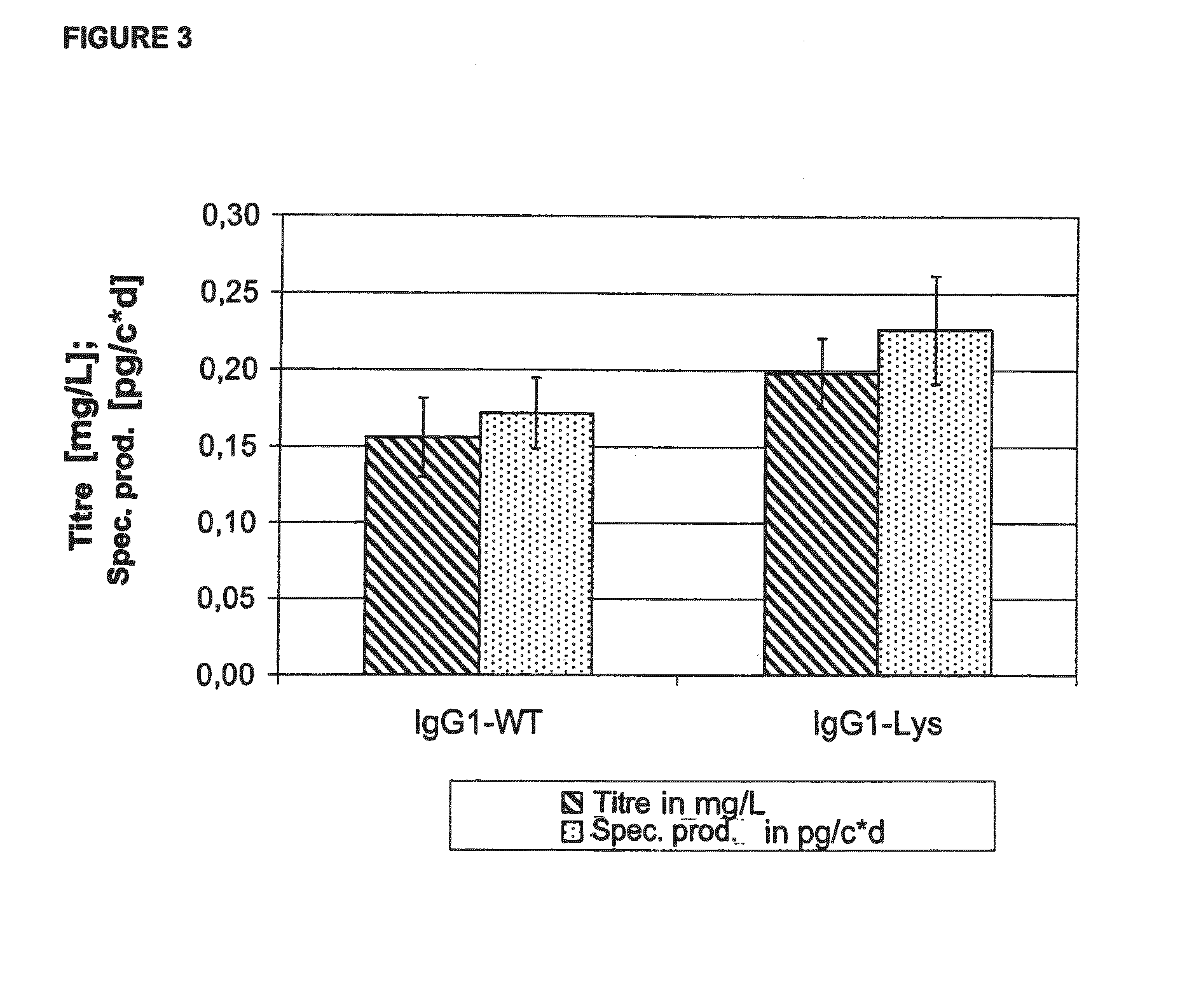Methods for increasing protein titers
- Summary
- Abstract
- Description
- Claims
- Application Information
AI Technical Summary
Benefits of technology
Problems solved by technology
Method used
Image
Examples
example 1
Cloning and Expression of IGG1 with C-Terminal Lysine Deletion
[0184]The heavy chain of the monoclonal humanised F19 antibody (IgG1 / kappa) is isolated from the plasmid pG1D105F19HC (NAGENESEQ: AAZ32786) as a 1.5 kb NaeI / HindIII fragment and cloned into the vector pBID digested with EcoRI (topped up with Klenow-DNA-polymerase) and HindIII, to produce the vector pBID / F19HC (FIG. 1). The light chain on the other hand is isolated as a 1.3 kb HindIII / EcoRI fragment from the plasmid pKN100F19LC (NAGENESEQ: AAZ32784) and cloned into the corresponding cutting sites of the vector pBIN, thus producing the vector pBIN / F19LC (FIG. 1).
[0185]The deletion of the C-terminal lysine on the heavy chain of the F19 is carried out by PCR using the mutagenic primer F19HC-Lys rev gacgtctaga tcaacccgga gacagggaga ggc (SEQ ID NO:1) with a complementary sequence to the gene sequence which codes for the last amino acids of the heavy chain in the C-terminal region. Certainly, the codon of the C-terminal lysine i...
example 2
Cloning and Expression of IGG4 with C-Terminal Lysine Deletion
[0192]In order to express a monoclonal humanised IgG4 antibody (IgG4 / kappa) the heavy chain is cloned as a 2.2 kb BamHI / SmaI fragment into the plasmid pBIDa digested with EcoRI (cutting site topped up by treatment with Klenow-DNA-polymerase) and BamHII, resulting in the plasmid pBIDa / IgG4 HC (FIG. 1. The light chain on the other hand is cloned as a 1.1 kb BamHI / EcoRI-fragment into the BamHI / EcoRI cutting sites of the plasmid pBINa, thus producing the plasmid pBIN8a / IgG4 LC (FIG. 1).
[0193]The deletion of the C-terminal lysine on the heavy chain of the IgG4 antibody is carried out by PCR using the mutagenic primer IgG4HC-Lys rev gacgtctaga tcaacccaga gacagggaga ggct (SEQ ID NO:3) with a sequence complementary to the sequence that codes for the last amino acids of the heavy chain in the C-terminal region. However, the codon of the C-terminal lysine is replaced by a stop codon. In addition, this is followed by a XbaI restrict...
example 3
Cloning and Expression of IGG2, IGG3, FC Fusion Proteins and Other Biomolecules with C-Terminal Amino Acid Deletion
[0200]In order to delete the C-terminal lysine on the heavy chains of the antibody isotypes IgG2 and IgG3, PCR mutagenesis is used, as described earlier in Examples 1 and 2 for isotypes 1 and 4. In the same way C-terminal lysine deletions are also carried out on Fc fusion proteins (bivalent or bispecific), in which biomolecules such as cytokines, soluble receptors, etc., are components of an Fc fusion protein (examples: Alefacept, LFA-3-Fc, Etanercept TNFR-Fc).
[0201]It is conceivable to extend the concept of codon deletion of C-terminal amino acids to biomolecules such as e.g. erythropoietin (EPO) and Tissue Plasminogen Activator (tPA), in which proteolytic cleaving of the C-terminal arginine is known (M. A. Recny, H. A. Scoble and Y. Kim, J. Biol. Chem., 262 (1987) 17156-17163; Harris, R. J. (1995) Journal of Chromatography A, 705 (1), pp. 129-134). The prerequisite is...
PUM
| Property | Measurement | Unit |
|---|---|---|
| Fraction | aaaaa | aaaaa |
| Fraction | aaaaa | aaaaa |
| Fraction | aaaaa | aaaaa |
Abstract
Description
Claims
Application Information
 Login to View More
Login to View More - R&D
- Intellectual Property
- Life Sciences
- Materials
- Tech Scout
- Unparalleled Data Quality
- Higher Quality Content
- 60% Fewer Hallucinations
Browse by: Latest US Patents, China's latest patents, Technical Efficacy Thesaurus, Application Domain, Technology Topic, Popular Technical Reports.
© 2025 PatSnap. All rights reserved.Legal|Privacy policy|Modern Slavery Act Transparency Statement|Sitemap|About US| Contact US: help@patsnap.com



